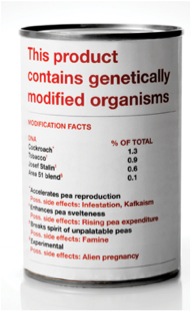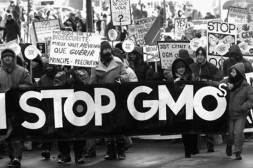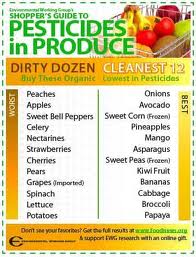The Truth About Genetically Modified Organisms – GMO’s
A Guest Blogger ….It’s a fantastic article that could also be titled; Everything You Ever Wanted to Know about GMO’s.
From April 28, 2012 by Soulsby Farm – A Very Small Farm Blog.
My name is Chris Vogliano and I am currently studying nutrition and dietetics at Kent State University in their Master’s Program. I am conducting my thesis study on the topic of Genetically Modified Organisms related to Dietitian’s knowledge and perception of them. According to previous research, the public trusts dietitian’s to relay current and scientific information on this controversial topic. However, as I hope to prove in my research, there is a significant knowledge gap in the perception of what dietitian’s know versus the knowledge they actually hold.
I chose this topic because genetically modified foods is personal and strikes an emotional cord. Ever since discovering the topic, I have unveiled more and more unsettling information about this complicated and controversial process.
Most of American’s have no idea what genetically modified foods are, even though over 80% of our supermarket foods contain them. Many American’s believe that simple crossbreeding is the same or at least a similar process to that of genetic modification. Some American’s place trust in the “assumed” strict regulatory processes of the FDA, USDA, and EPA.
Politics plays a much more pertinent role in our lives than anyone wants or cares to believe, and I adamantly feel this with GMO’s…
The patenting of a transgenic soybean in the early 1990’s has had more of an impact than we would have ever imagined. We have seen a revolutionary agricultural shift in the way we grow our produce form even twenty years ago.
Many see this synergy of biotechnology and agriculture as a positive step towards our goal of creating a more economically sound production method for our food. Big agriculture business has consolidated hands over the years to just a few large corporations, leading with the illusion of solving world hunger and bridging the world’s nutritional deficits.
As a soon to be dietitian who heavily values nutritional philanthropy, I could not have been more eager to learn more about this technology that could potentially curb our world hunger problems.
Let’s take a step back and look at the role of corporations in our society.
While we all vary on our opinions of specific corporations, deeming some as good and some evil, we have to remember one simple fact. Through all the humanitarian efforts some might drape over their figurative bodies to display a positive PR image, corporations have one goal and one goal only.
The primary goal of a corporation is to increase profits for its shareholders. Plain and simple.
While some corporations may choose donations and community building tactics to seem selfless, at the end of the day it is simply to make you feel better about being a customer of their product. This is not to demean the great things some corporations have done, but to call it an altruistic act is not so valid (arguably, is anything actually selfless? a question better saved for your philosophy 101 class).
Back to the grit of GMO’s – The basics of genetically modifying organisms is as follows:
A desired gene from a species not related to the host organisms is transferred into the cultivar or desired product (while sounding simple, this is actually quite a complex process). The interesting part is that we don’t know how this transgenic, or crossing DNA from one foreign species to another affects humans or the environment. This technology was developed and implemented into our food supply less than 15 years ago.
Monsanto is the largest corporate sponsor of GMO’s, fighting for their governmental acceptance worldwide ever since their creation. A quick lesson on Monsanto’s history:
One of the first products Monsanto created was the artificial sweetener saccharin, which we now know can cause cancer
The next major products were DDT, Lasso, and Agent Orange, which we now know are highly carcinogenic.
Now they are trying to sell the idea of “genetically modified seeds” to us as being healthy and safe, when in all reality they are a self regulating organization whose primary interest is not the health of the consumers, but the money in their pocket.
European countries have strict regulatory standards and most countries have stopped the production of GMO’s until further testing has taken place. Those countries who do have GMO corn must blatantly label their products with the phrase “this product contains genetically modified ingredients”, which protects the integrity of the food supply and the safety of the consumers.
GMO seeds have NEVER been tested in human trials to determine the impact they have on our bodies.
60% of our DNA is identical to that of corn and soy, and we have no idea how this transgenic process of altering genes in our food will affect us in the short term or the long term.
The only test currently being done to determine the safety of these products is happening right now, in our grocery stores.
As American’s, we deserve the right to know what is in our food. There is a serious need for us to take action on this issue that will help define the future of the agricultural food chain. We need the health of our food to lean in our favor, and not that of large corporate interest.
While there has been unethical practices that have been slipped passed the American consumers unbeknownst to them in the past decade, there has never been a more opportune moment to express out opinion than now. More than ever, people are forming organizations and events to express their desire to have genetically modified foods labeled. It is out food supply and we deserve the right to know what we are consuming.
think. be educated.
For more information or to get involved (highly encouraged!) visit:
LinkedIn Account:
www.linkedin.com/pub//chris-vogliano/41/806/370
WordPress account









































